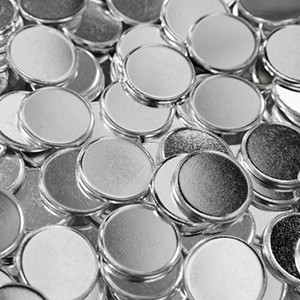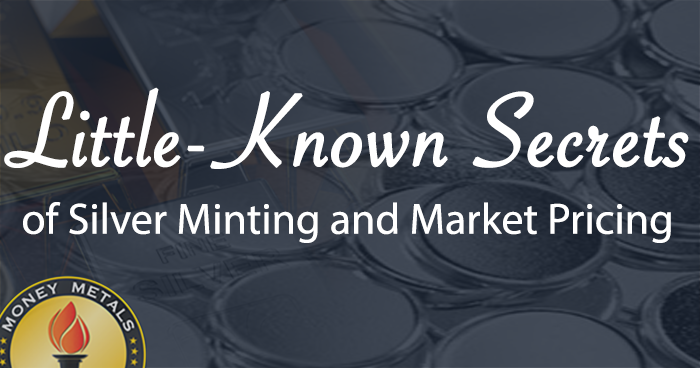
Producing a beautiful silver round is a whole lot harder than it might seem. Money Metals Exchange utilizes some of the best run mints in the country to produce our silver rounds, and we have toured them all. After each visit, we are struck by just how many individual steps there are in the process. And by how important nuances are, such as the type of media used in polishing the silver blanks when it comes to luster and shine.
The actual minting is only the last step in the process of making a round or coin, and it is one of the simplest.
Melting the Silver

The first step is melting. Furnace operators melt grain, scrap, or larger (typically 1,000-ounce) bars at more than 2000 degrees and pour the molten metal into billets. Batches are tested to ensure bullion purity of at least .999 fine.
The ingots are transferred to an extruder and formed into a rectangular bar. These bars are fed through a rolling mill, passing back and forth through a set of rollers, and pressed thinner with each pass. The result is a long thin strip, a few inches wide and many feet long. Each strip must be flattened and straightened.
After straightening, the strips are then ready to be stamped into blanks. But stamping round blanks from a rectangular strip utilizes the strip inefficiently. More than 60% of the metal winds up being returned to the furnace as scrap -- to start the process anew.
The blanks are re-heated to around 1,200 degrees in an annealing furnace and cooled slowly to soften. Annealed blanks then pass through a “rimmer” that forms a rim, or lip, around the perimeter.
Polishing the Silver Rounds
At this point, the blanks are ready for polishing. They are tumbled for hours with polishing media and lubricant to produce a high luster and then carefully weighed and measured. Rejected blanks get sent back to the furnace.
Finally, the finished blanks are fed through the minting press which stamps the obverse and reverse of each with its final design and adds the reeded edge. And the finished product is weighed once again. Well-made blanks all but guarantee the coin or round will be beautiful and on target with regards to both size and weight.
Low Premiums on Quality Silver Rounds
Having seen this entire process several times we can honestly say it is remarkable that the premiums for privately minted rounds are as low as they are. At Money Metals Exchange, one-ounce Walking Liberty rounds, for example, can be obtained for as little as $1.14 per ounce over spot. The amount of effort to produce them is extraordinary.
It also explains why premiums for rounds work as they do. We often get customers wondering why premiums for rounds are not following the metal price downward (although the overall cost per silver round goes down, of course.) The answer is that premiums are a reflection of labor and equipment costs rather than spot market prices. Silver’s fall to $16 per ounce had zero impact on the manufacturing process outlined above, and this will also be true should prices rise.
That said, private mints will adjust charges based on market conditions. Investors can expect them to capitalize should demand overwhelm production capacity. We have already seen premiums rise during periods of big demand in recent years, then fall as production catches up. It is a normal and healthy market function and a good reason to capitalize by buying when both spot prices and premiums are low -- as they are right now.

About the Author:
Clint Siegner is a Director at Money Metals Exchange, a precious metals dealer recently named "Best in the USA" by an independent global ratings group. A graduate of Linfield College in Oregon, Siegner puts his experience in business management along with his passion for personal liberty, limited government, and honest money into the development of Money Metals' brand and reach. This includes writing extensively on the bullion markets and their intersection with policy and world affairs.





